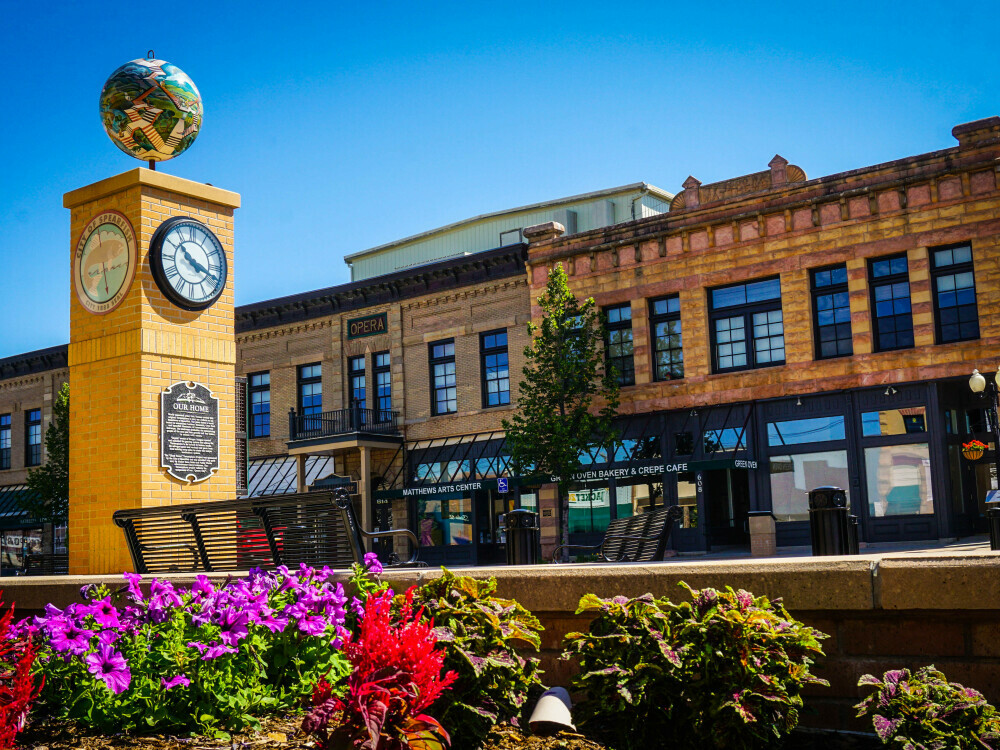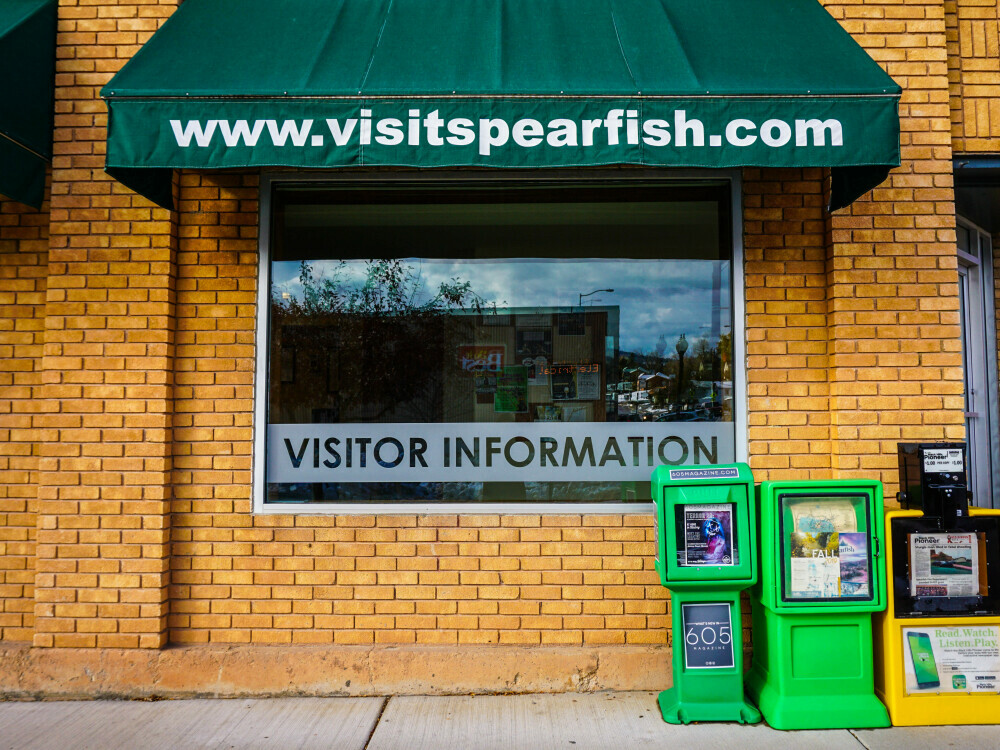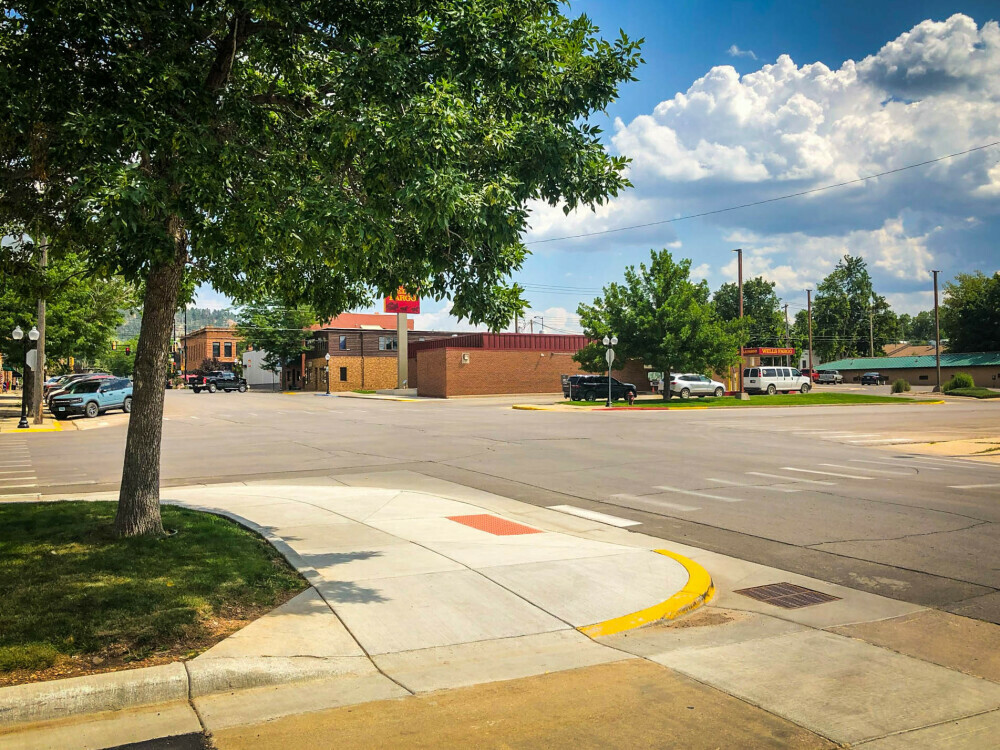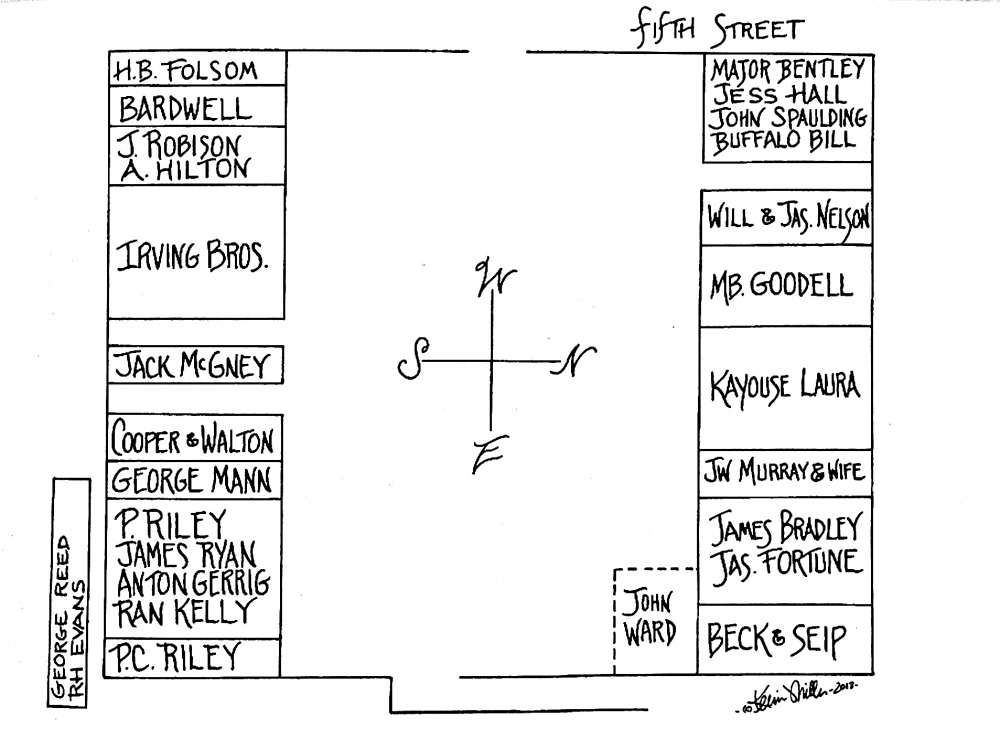The year is 1876. Gold fever is attracting prospectors, homesteaders, and adventurers to the Northern Black Hills of Dakota Territory. A small settlement along the Spearfish Creek is beginning to show signs of permanence. Unlike the wild raucous mining town of Deadwood, Spearfish is growing quietly into a center for commerce and community. It is in this year – 1876 – that Alfred Gay and J.E. Smith Establish a town site with extra wide streets and alleyways on the banks of Spearfish Creek. The placer gold is running out and the Indian Treaties are taking hold. Rumors in Dakota Territory hint of statehood, and in 1888, one year ahead of South Dakota Statehood, Spearfish incorporates as a city. By now, area ranchers and the handful of miners still working their claims are searching for a community that meets their social and commercial needs. Spearfish has already established its peaceful presence in this rugged land and stands ready to meet the challenges of statehood as the Queen City of the Black Hills.
The L-shaped Spearfish Historic Commercial District encompasses a four-block area around Spearfish’s Main Street. It reflects a classic turn-of-the century character generously incorporating the native sandstone into many of its original buildings. Of the 24 buildings that makeup the district, 16 were built before 1911, only four can lay honest claim to the architecture and styles common after 1930.
No. 1 – Lown Mercantile
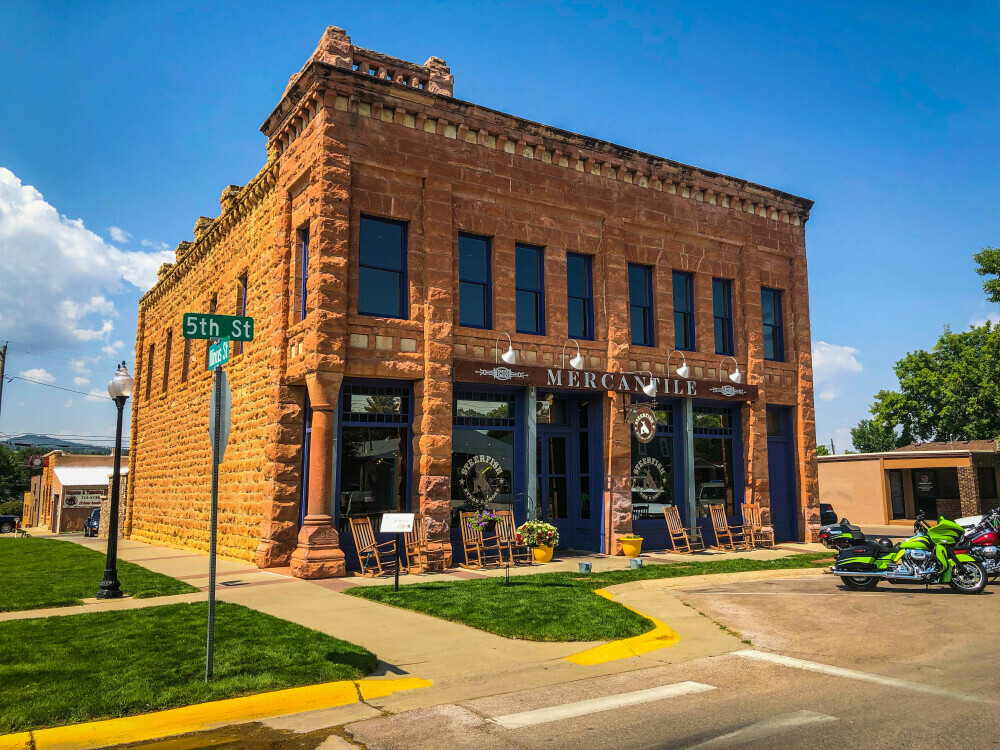
William Lown built the Lown Mercantile at 701 Fifth St. in 1893. Swan Thompson was hired to construct the impressive two-story building using native sandstone quarried from Higgins Gulch and Lookout Mountain. It was designed with large plate glass windows to display the many wares that were offered in the general store. The store was famous for its candy counter and wide range of items for sale. The upper level was mostly storage but on occasion was also used for dances. William Lown and his sons, Brownie and Ernest, ran the store from this building for 70 years. It closed in 1963.
No. 2 – The Mail Building
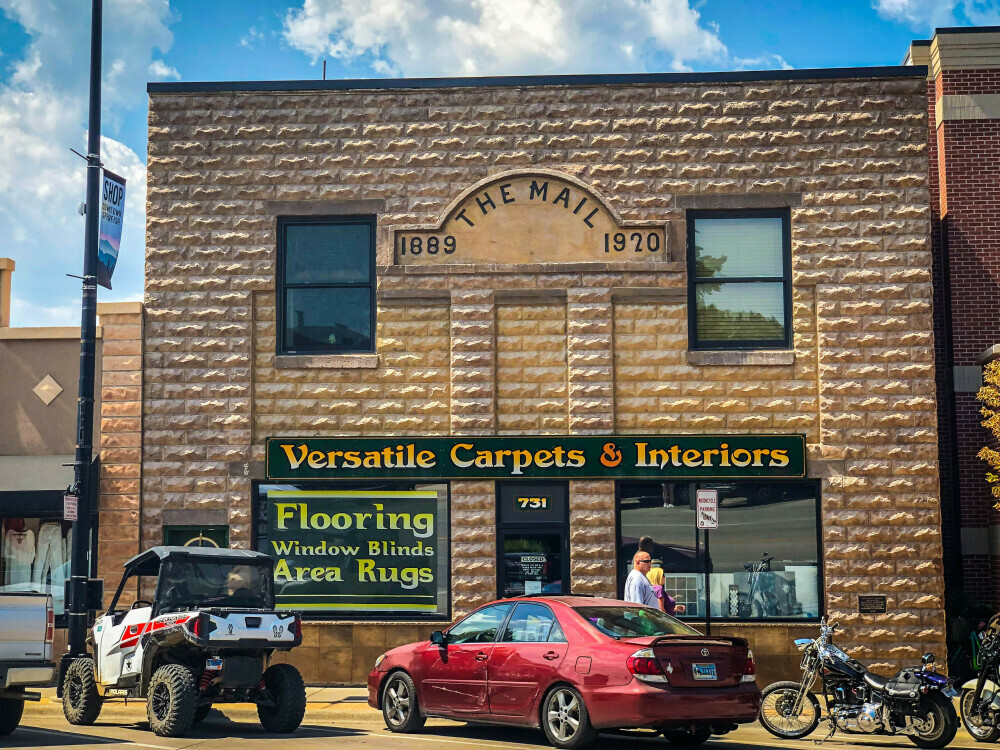
The Mail Building at 731 Main St. was constructed for Edward Warren in 1920. Warren had moved to Spearfish with his parents in 1888 with hopes of starting a newspaper. In 1889 they established the Queen City Mail. The Mail Building was built to house the growing newspaper publishing business. It is constructed of cast concrete blocks of native sandstone material. Warren served in the South Dakota legislature and as the Lawrence County Auditor. In 1929 he sold the newspaper to Arthur Nieselius and in 1932 the Queen City Mail moved to a new building. It then served as the U.S. Post office during the 1930’s.
No. 3 – Odd Fellows Hall
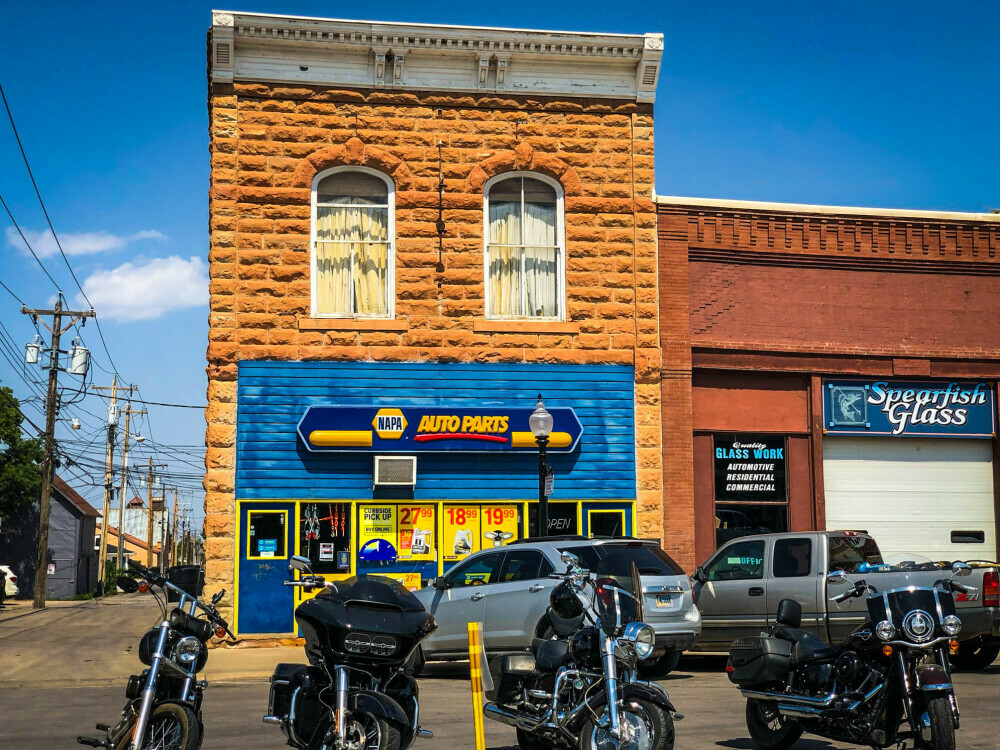
The Odd Fellows Lodge at 122 W. Illinois St. is a fraternal organization that dates back to the 18th century England and centers around helping those in need. The Spearfish Lodge #25 constructed this building of native sandstone in 1892. It was officially opened in January of 1893. The odd Fellows and other organizations met upstairs, and the street level was used as retail space. At different times it has been a laundromat, bowling alley, clothing store and auto parts store.
No. 4 – American National Bank
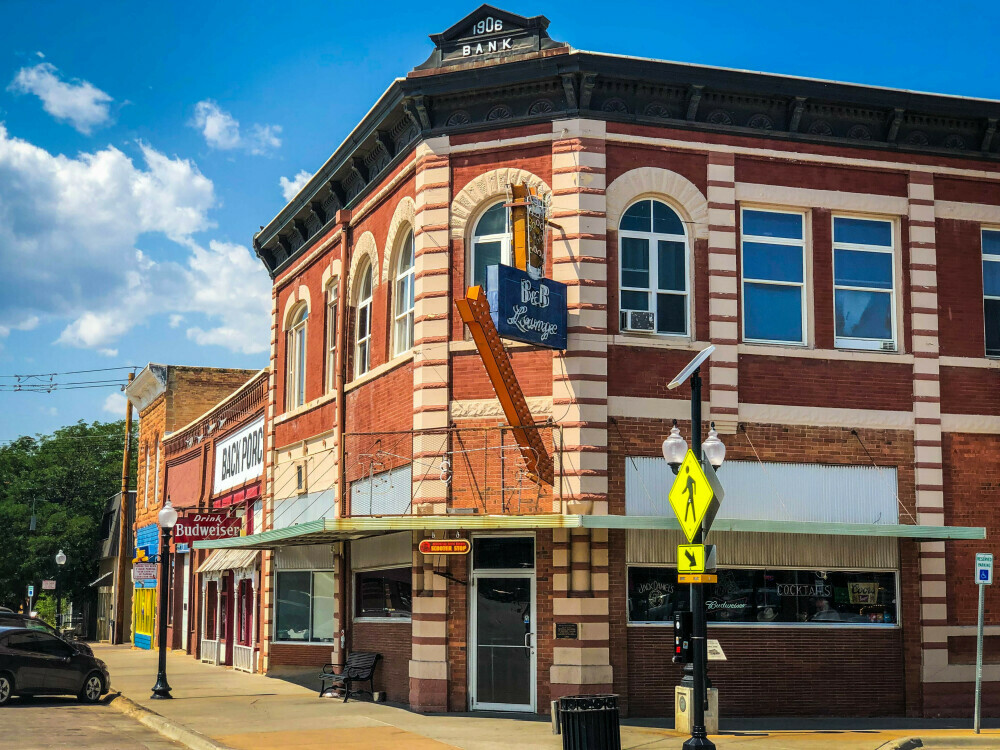
This substantial building, constructed of brick and local sandstone at the corner of Main and Illinois Streets, was completed in 1906 for the American National Bank. It was the same year that the Matthews Block and Opera House were completed. The future was looking bright for Spearfish as the downtown business district was taking shape. In 1927 the American National Bank was brought out by the Bank of Spearfish, the other bank in town, and closed its doors. For many years afterwards Dr. Lyle Hare, MD and Dr. Smoots, DDS, had their offices upstairs and a drugstore was conveniently located downstairs.
No. 5 – Spearfish City Hall (old)
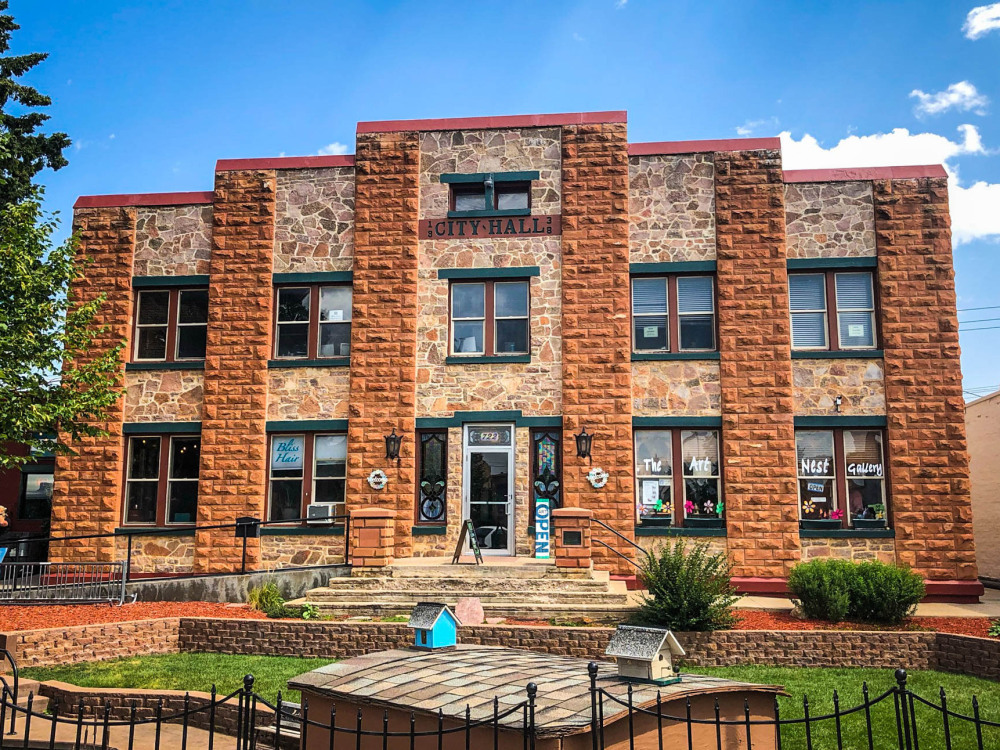
The City Hall was built at 722 Main St. in 1939 and was funded in part with Works Project Administration Funds. The WPA was created in 1935 by the federal government to provide jobs for unemployed people during the Great Depression. Before 1939 the city offices were housed in different buildings downtown. The City Hall cost $45,000 to build, $39,000 of which came from WPA. Seventy men from Lawrence County were hired to do the construction work. The City Hall is constructed of a combination of brick, concrete, and sandstone. The city offices were located here until 1995.
No. 6 – Spearfish Filling Station
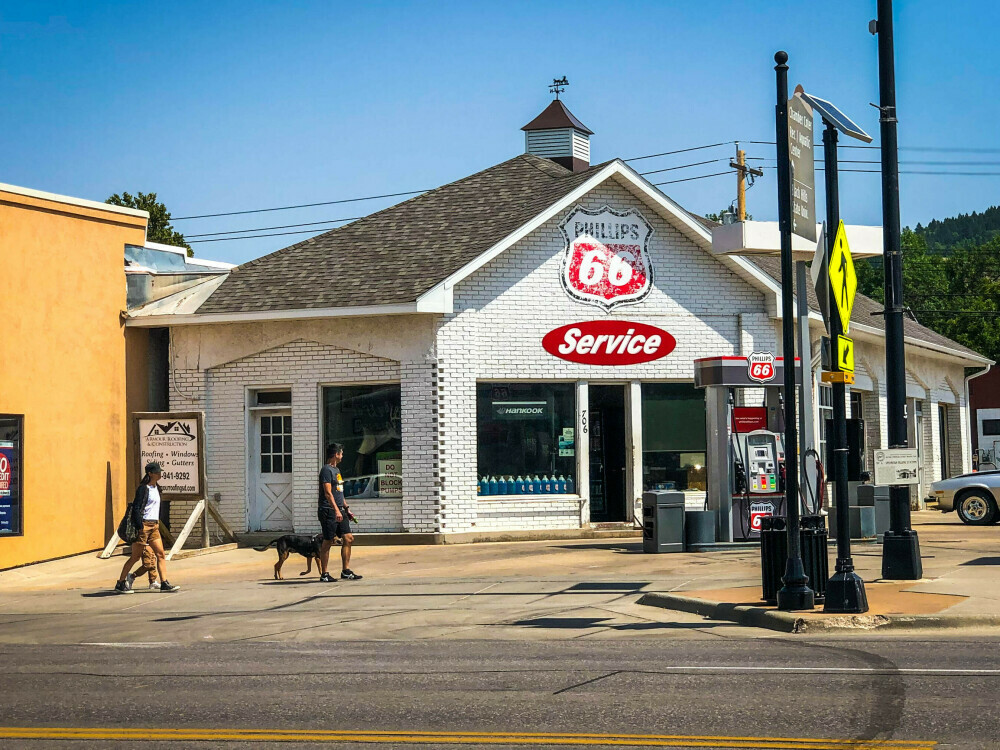
In 1923, Alfred J. Sleep, a prominent Spearfish area rancher and businessman, built the Spearfish Filling Station. It was one of the first filling stations in the community. By the 1920’s tourism was an important source of income in the Black Hills and many of the citizens of Spearfish were proud owners of automobiles. Mr. Sleep could see the potential for the new business. The back bays were added a few years later. He operated the business for many years. It was later owned and operated by two generations of the Williams family. The structure has remained largely intact on the northeast corner of Main and Illinois Streets, with the exception of windows and a roof that once covered the gas pumps.
No. 7 – Queen City Hotel
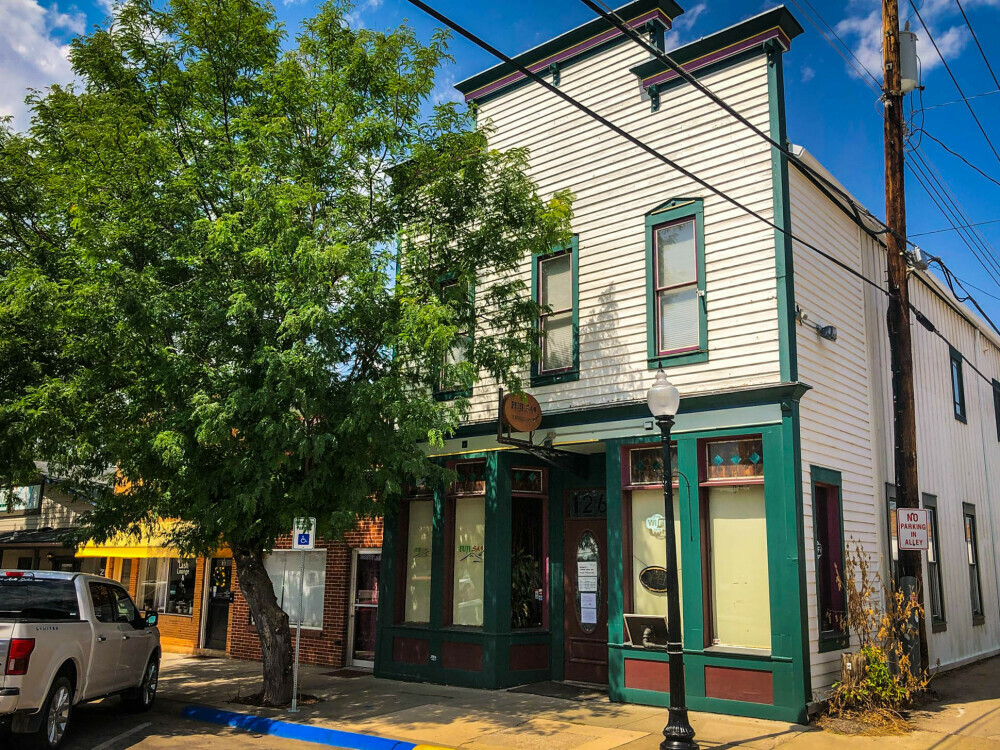
The Queen City Hotel was built at 126 W. Hudson St. c. 1892 and was one of the first hotels in Spearfish. It sits near the Spearfish/Deadwood stage stop and the railroad depot. The downstairs contained a restaurant, bar, lobby and library. The second floor had over a dozen guest rooms and one bathroom. After a few years as a hotel, it was used mostly as a boarding house. By the 1960’s it was converted into retail space and the original façade was covered up. In the 1990’s the structure was renovated, the façade restored, and the downstairs was again made into a restaurant. It is the only remaining two-story false-fronted downtown building constructed before 1900.
No. 8 – Billiard Hall
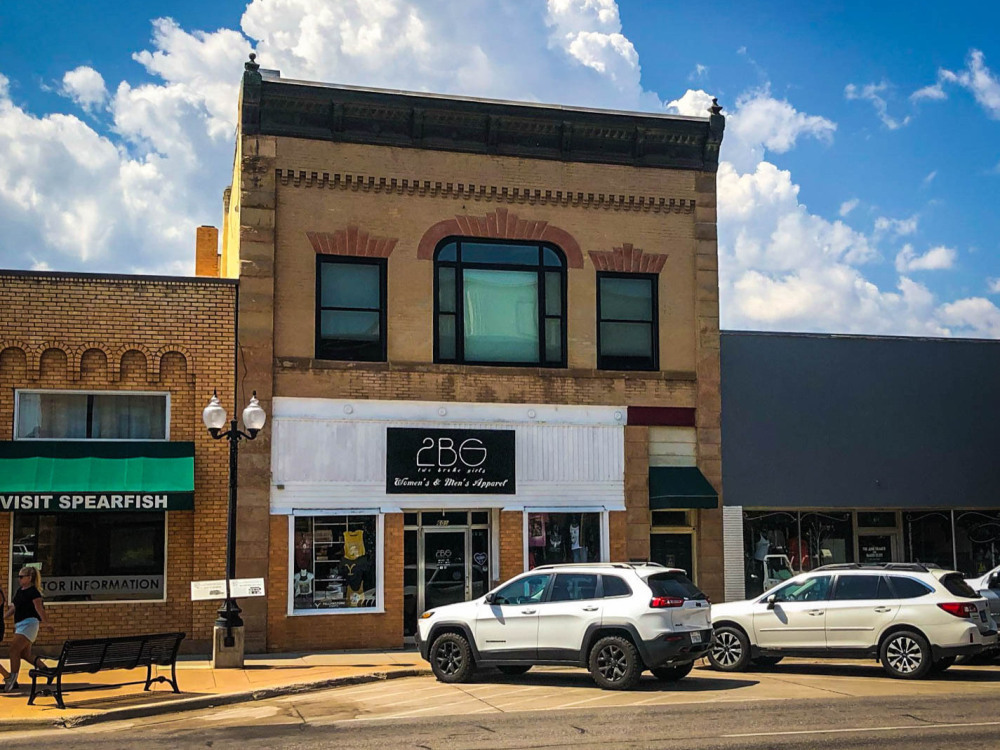
The first building on this site at 605 Main St. was the Lown Hardware Store. William Lown’s store was originally on the corner lot, but when he sold that lot in the early 1880’s he moved the wooden structure north to this site. In 1893 Lown opened his new mercantile a block to the west. The lot was sold, and the original hardware store was torn down and this brick structure with Italianate characteristics was built in its place. A dry goods store was located here originally. By 1915, and for many years after, a bar and a billiard hall occupied the lower level. When farmers came into town on Saturday the men often waited in the billiard hall while their wives did the shopping. Some of the city offices were housed on the upper level, until the city hall was built in 1939.
No. 9 – Bank of Spearfish
On this corner site William Lown built his hardware store in 1880. In 1882 he sold the corner lot to G.F. Stebbins, moved the hardware store structure north 50 feet to the adjacent lot, and the Bank of Spearfish was built in its place. It was originally known as Stebbins, Fox and Co. The new structure was two stories; constructed of brick in 1883. The Bank of Spearfish was very successful and eventually bought out the other bank in town. In 1906 Stebbins purchased the lot next door where the hardware store stood. The hardware store was torn down and a structure was built to match the bank. That structure, listed on this tour as the Billiard Hall/City Hall, still stands. Stebbins had hopes of an entire “Stebbins Block” but that never came to be. He ended up moving back to New York. The Bank of Spearfish eventually became the First National Bank with Walter Dickey as vice-president and manager. Dickey purchased the Bank of Spearfish building and soon after the building was torn down. The rumor around town was that Dickey did not approve of the businesses that had been operating out of the second floor. The bank was rebuilt and that structure still stands today 603 Main St. also know as the Visitor Information Center.
No. 10 – Seth Bullock Building
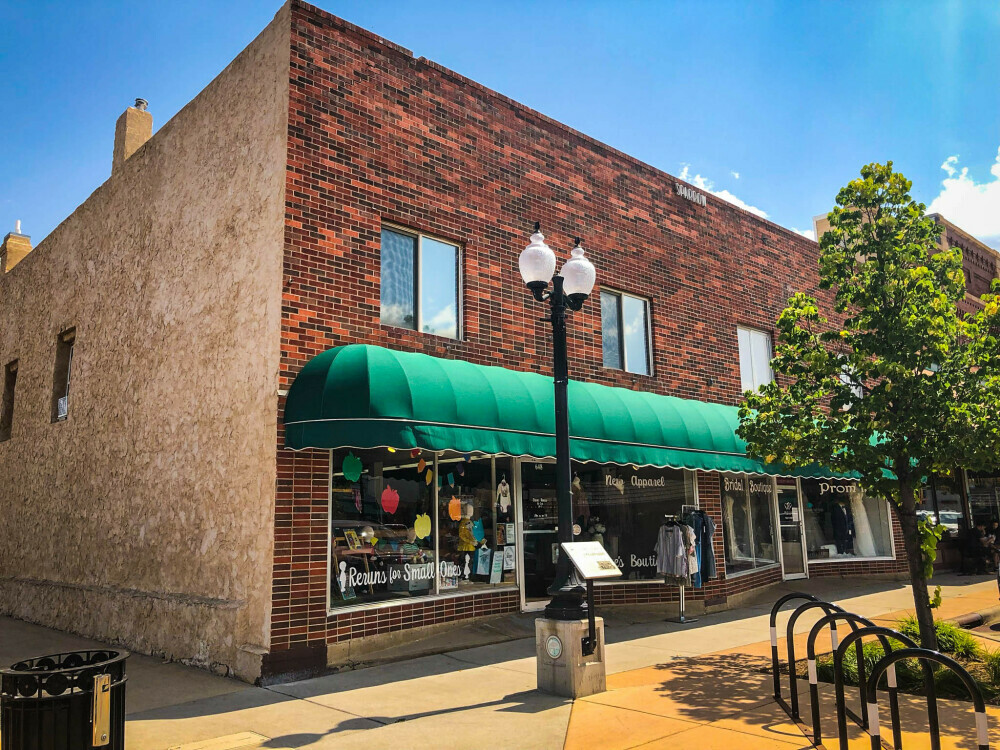
Seth Bullock is well known in the Black Hills as the first sheriff of Deadwood and for bringing order to the town. However, he also founded the town of Belle Fourche and was involved in the early days of Spearfish. He and his partner Sol Star constructed this building in 1885. One side was to be used for Frank Welch’s grocery, the other for Star Bullock and Bishop’s Hardware Store. A store by the same name had been opened in Deadwood in 1876. By 1909 George Stabler had moved his meat market into the space and John Munger had a general mercantile store. More recently the building at 648 Main St. has contained a bridal and florist’s shop, bookstore, and for many years a bakery.
No. 11 – Plank/Ashley Building
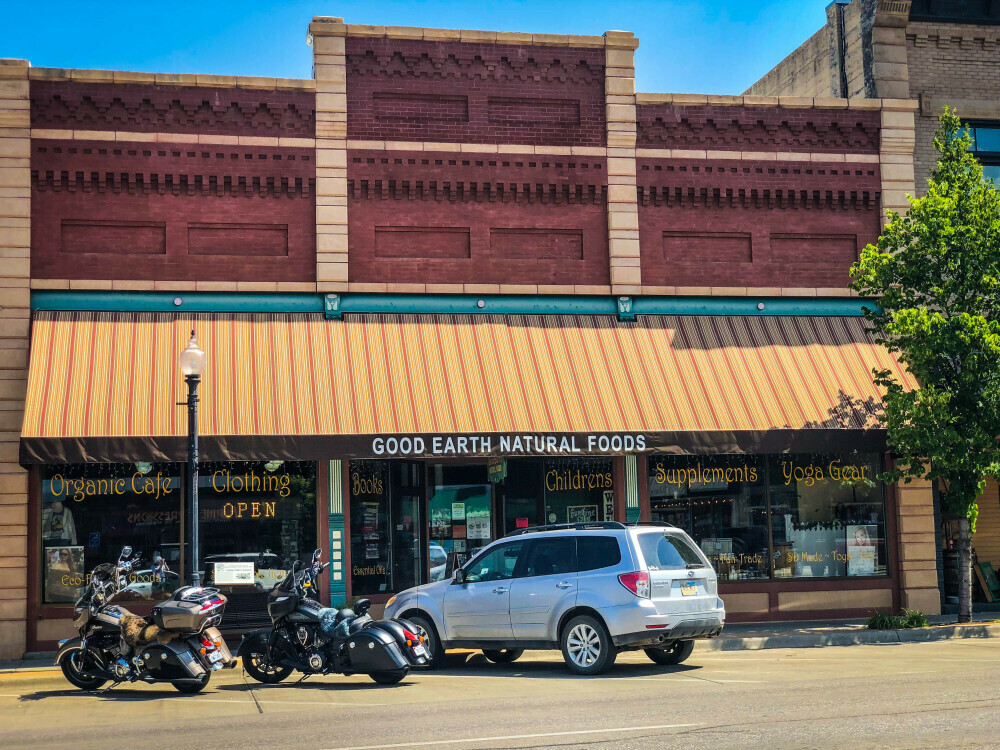
This large brick structure at 638 Main St. was constructed c. 1908 originally as a furniture store. Rugs, pain and Queens ware China were also sold. It later became a funeral home. H.F. Plank ran his undertaker’s business, selling furniture and caskets and conducting funerals in the building. The street outside was closed off for parking during the funerals. Eventually it became the local dime store. For many years it was Ashley’s Variety and then became a Ben Franklin Store. In 2006 the Dykstra family acquired the building and moved their natural foods and handmade pottery business into it. They renovated the building to bring back some of the original features including the tin ceiling and wood flooring.
No. 12 – Matthews Block
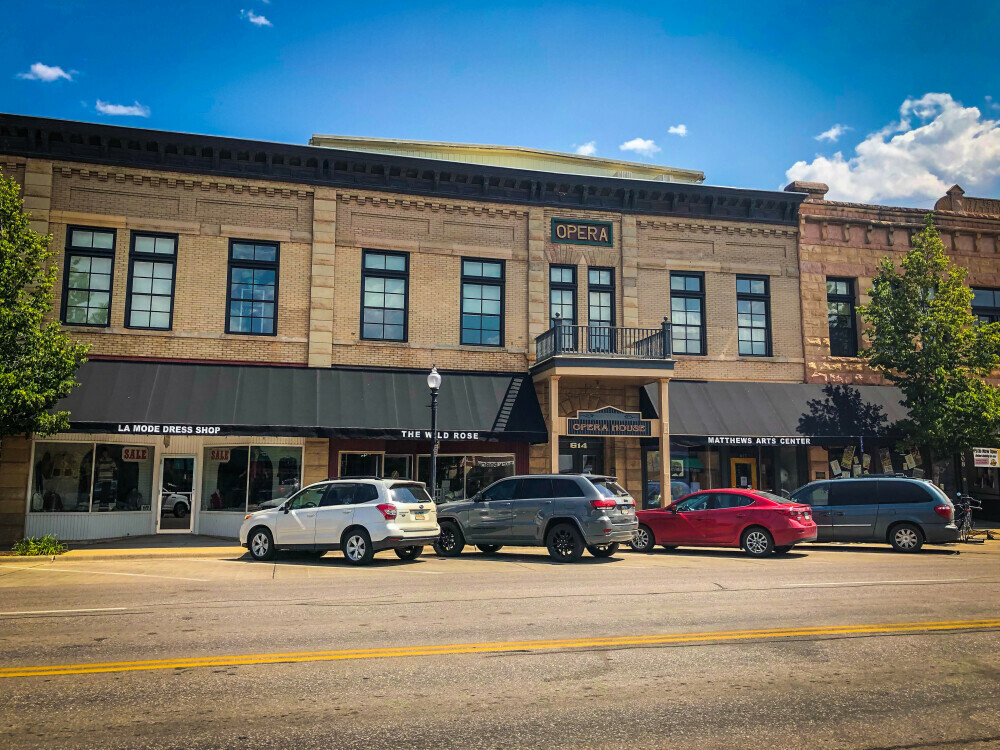
Thomas Newton Matthews was originally from Texas, owned property in Wyoming and lived in Spearfish. In 1900 he began construction on a large commercial building on the northeast corner of Main and Hudson Streets. Just as construction was finished, he decided to expand. His plans included stores on the first level of the new building, apartments, offices, and an opera house on the second level. The expansion was completed in 1906 and is composed of native sandstone and brick. In later years Thomas Newton’s son, Thomas William removed the seats from the opera house so that it could be used for a dance floor. Silent movies were shown in the opera house in the 1920’s. During the 1970’s a local production of “The Phantom of the Matthew’s Opera House” was performed every summer. A complete renovation of the opera house, which was completed in 1997, added a lobby and modern facilities.
No. 13 – Stockade
In 1876 the Black Hills were not yet officially open to white settlement, according to the Ft. Laramie treaty. But white settlers came anyway. The hundred or so people in Spearfish at the time felt a little uneasy knowing that they were vulnerable to attack from Lakota Sioux who were still living in the area. There had been several reported raids on stock pastured on the outskirts of town. A stockade was built near the intersection of what is now Fifth and Hudson Streets in 1876 and stood for less than a year. It was constructed of large logs set on end in a 2-foot trench. It was large enough to contain a central corral for horses and cattle and a few small cabins for the people of the town, the space enclosed being approximately 140’ x 100’. The builders of the stockade were Johnny Spaulding, William Tamlin, A. Irving, A.C. Riley, Tony Gehrig, G.D. Bronson, Ran Kelley, and G. Hauser. In 1877 the U.S. government opened the area to legal settlement and the stockade was no longer needed.
No. 14 – Spearfish Hotel
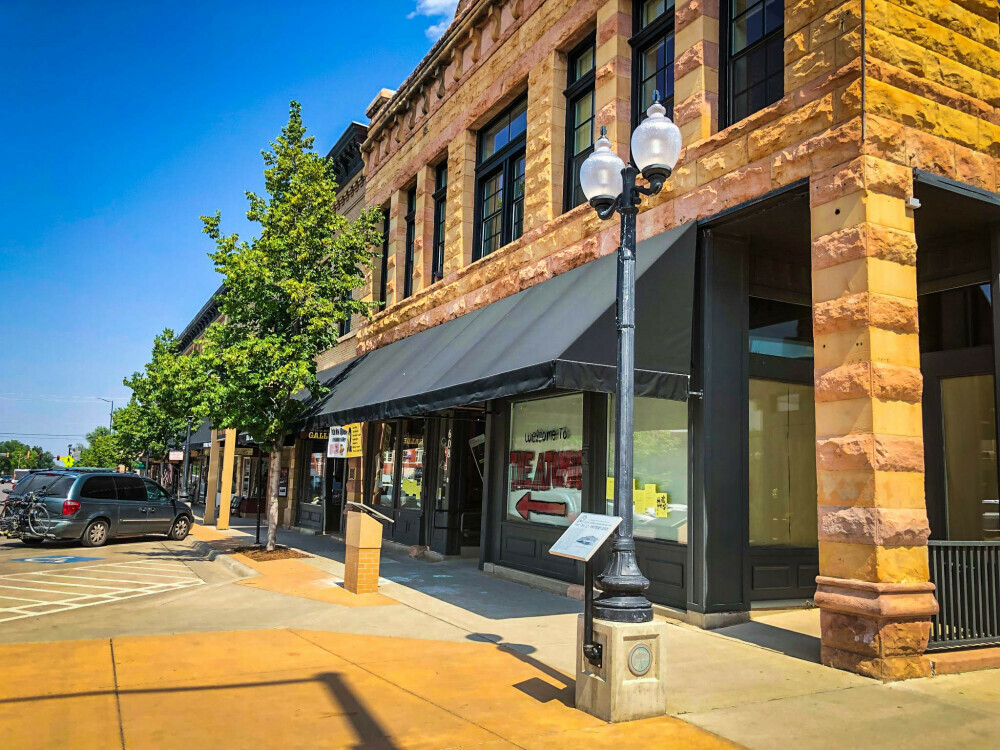
The Spearfish Hotel on the southwest corner of Main and Hudson Streets was a well-known landmark in downtown Spearfish for almost 100 years. The original wooden structure was built in 1877. It burned down in 1880. The hotel was rebuilt but suffered another fire that burned several downtown buildings in 1886. James Rogers, owner of the hotel, reported a $30, 000 loss in structure and furniture. Again, it was rebuilt. It was the largest hotel in Spearfish. There was a lobby, restaurant, and bar on the first floor as well as other retail spaces. In the 1940’s the hotel was purchased by Bud and Margaret Kelly and eventually became known as Kelley’s Motor Hotel. During the middle of the night in October of 1975 it burned to the ground. After being destroyed by fire for the third time, the hotel was never rebuilt.
No. 15 – John Wolzmuth Building
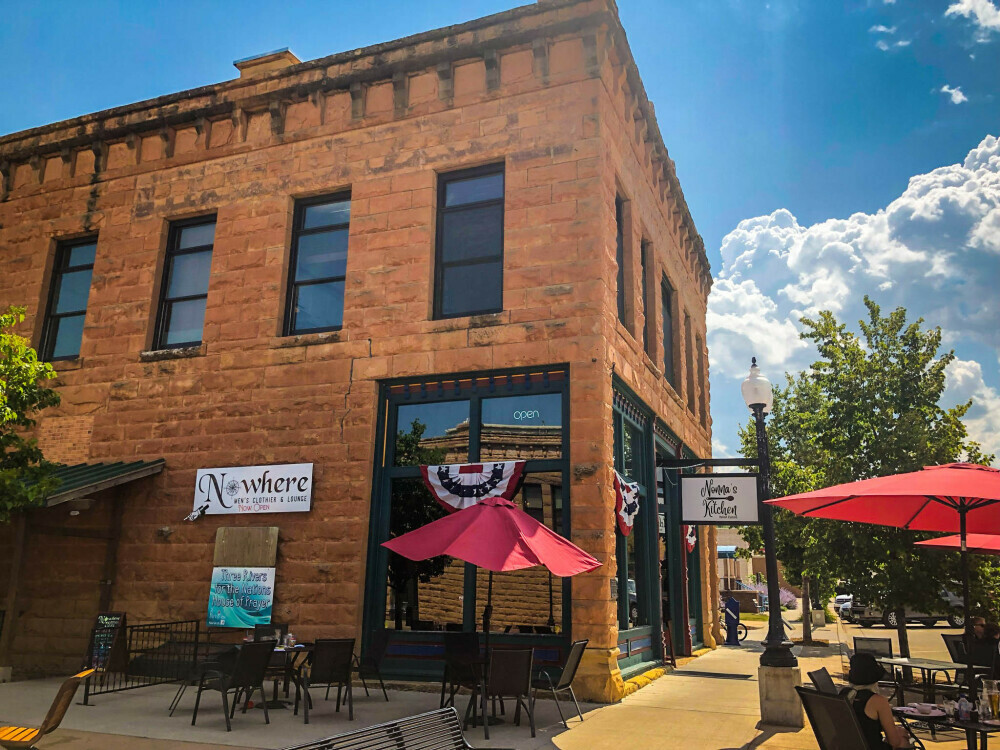
Wolzmuth Hardware was built at 544 Main St. in 1899 by local businessmen John Wolzmuth and L.W. Valentine, although soon after Wolzmuth took over sole ownership. It is a substantial two-story building equipment, and construction supplies. John Wolzmuth was an important member of the community. He originally came to the Hills in 1876. In 1886 he was elected to the legislature and was a member when South Dakota became a state. He served at least nine terms and served several terms as mayor, was on the city council, was one of the first county commissioners and served on the board of education. He was instrumental in getting state funding for the Normal School with a bond in the amount of $25,000. The school would later become Black Hills State University. Eventually his son Elmore went into the hardware business with him. By the late 1950’s the by then former hardware store became the location of the first Safeway in Spearfish.
No. 16 – Spearfish Post Office (old)
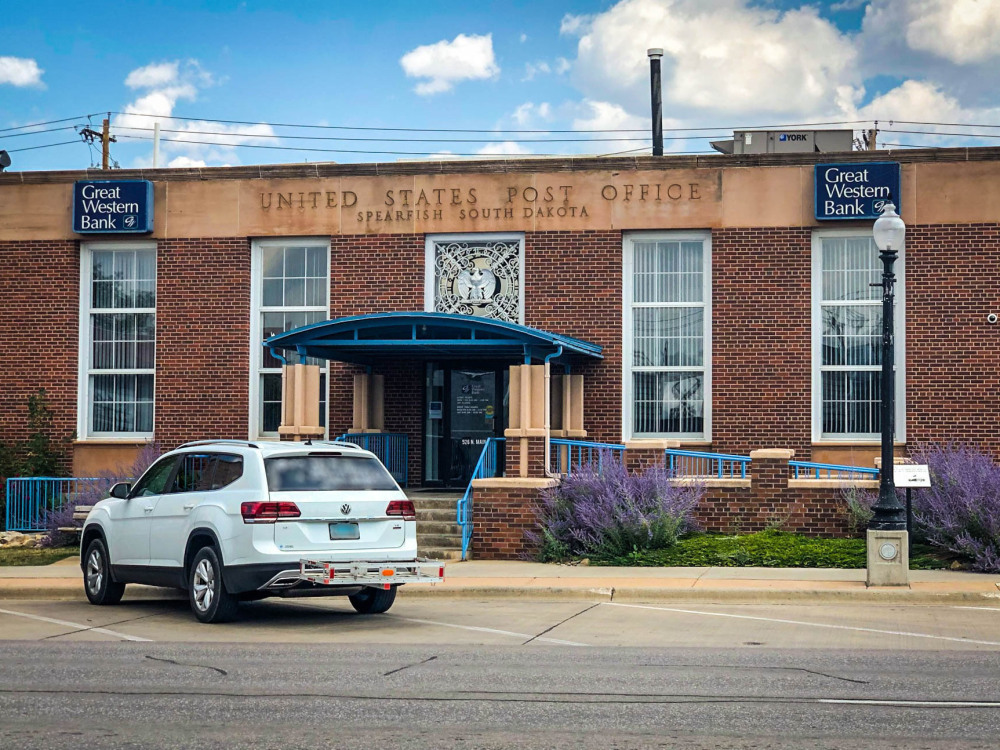
In 1940 this post office opened for the use of the citizens of Spearfish. It is built in an architectural style that was used in many small towns. There were also offices in the basement to house federal programs such as the Extension Service. From 1930 to 1942 the federal government greatly expanded its public building programs. The style of the Spearfish Post Office was described as Class C, for a “second class city,” which was defined by the volume of postal receipts. The Class C post offices were brick buildings with wood doors and windows and very simple forms of ornamentation. In 1937, $75,000 was allocated for all expenses surrounding construction of the post office. Programs to employ artists were part of the national recovery effort during the depression. Marion Overby of Los Angeles was commissioned to do a sculpture for the interior of the building. After consulting the mayor for ideas, she titled her work “Fish Story.” The sculpture still hangs on the wall of the lobby. The post office closed at this location in 1997.

